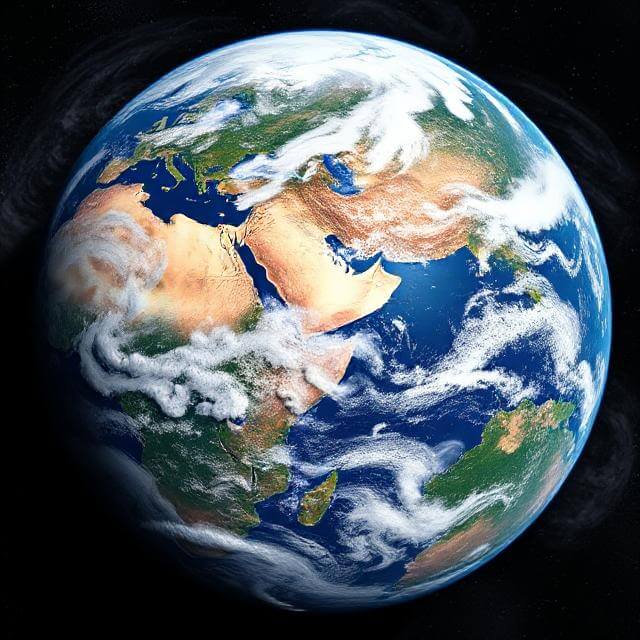Hyperspace Travel: Faster-than-Light Journeys Through Space
🚀 Introduction: The Dream of Faster-than-Light Travel
For centuries, humanity has dreamed of exploring the far reaches of the cosmos. However, the vast distances between stars make interstellar travel nearly impossible with current technology. Enter the concept of hyperspace travel—a theoretical faster-than-light (FTL) mode of transportation that could allow us to bypass the limits of relativity. Hyperspace travel has long been a staple of science fiction, but could it ever become a reality? This article delves into the science, theories, possibilities, and challenges of traveling through hyperspace.
🌌 1. What Is Hyperspace?
Hyperspace is a theoretical dimension or alternate space that allows for faster-than-light travel. In physics and science fiction, hyperspace is often described as:
- A shortcut through space-time, allowing travelers to cover massive distances in a short time.
- A parallel dimension where the normal rules of physics, particularly the speed of light, do not apply.
- A realm that enables ships to bypass normal space and move at superluminal speeds.
🔥 Origins of the Concept:
- The idea of hyperspace first appeared in science fiction literature during the early 20th century.
- Edmond Hamilton’s The Star-Roamers (1920s) introduced the concept of traveling through a parallel dimension to bypass light-speed limitations.
- In physics, the notion of higher dimensions gained popularity through theories like string theory and M-theory.
🚀 2. The Science Behind Hyperspace Travel
🛸 General Relativity and the Light-Speed Limit:
According to Einstein’s theory of relativity, nothing can travel faster than light in normal space. The speed of light (c ≈ 299,792 km/s) acts as a cosmic speed limit.
⚡ Hyperspace: Bypassing Relativity?
Hyperspace travel is based on the possibility of moving through a higher dimension or bending space-time. Theoretically, this would allow objects to cover vast distances without violating relativity. Potential mechanisms include:
- Wormholes: Hypothetical tunnels through space-time that could connect two distant points.
- Warp drives: Devices that could create space-time distortions, contracting space in front of the ship and expanding it behind.
- Extra-dimensional travel: Moving through hidden dimensions proposed by string theory, which may contain shortcuts in the fabric of space-time.

🌠 3. Theoretical Models of Hyperspace Travel
🔥 1. Wormholes: Cosmic Shortcuts
- What are they? Wormholes are hypothetical tunnels connecting two points in space-time, potentially allowing for instantaneous travel.
- The Einstein-Rosen Bridge: A solution to Einstein’s field equations, describing a wormhole connecting two black holes.
- Challenges: Wormholes may require exotic matter with negative energy to remain stable, which is purely theoretical.
⚡ 2. Alcubierre Warp Drive
- Proposed by Miguel Alcubierre in 1994, this theoretical concept uses a space-time bubble to achieve faster-than-light travel.
- It contracts space in front of the spacecraft and expands it behind, allowing the ship to ride the wave without technically exceeding the speed of light.
- Challenges: Requires large amounts of negative energy, which may not exist.
🌌 3. Tachyons: Particles Faster Than Light
- Hypothetical particles that could travel faster than light.
- They have not been observed but remain a theoretical possibility in some versions of quantum field theory.
- Challenges: Tachyons are speculative and may violate causality, leading to time paradoxes.
🚀 4. String Theory and Extra Dimensions
- String theory proposes that the universe has 11 dimensions (or more), some of which are compactified and hidden.
- Hyperspace travel could involve accessing these hidden dimensions, where the laws of physics may allow faster-than-light movement.
- Challenges: These dimensions are currently theoretical and unobservable.
🌍 4. Hyperspace Travel in Science Fiction
Hyperspace travel has been a staple in sci-fi literature, films, and games for decades.
🎥 Famous Examples:
- Star Wars: Hyperspace is depicted as an alternate dimension where ships can travel faster than light by jumping into it.
- Star Trek: The “warp drive” uses a space-time bubble to achieve faster-than-light speeds.
- The Expanse: Features more realistic space travel, but still explores the possibility of FTL through theoretical physics.
🔥 Common Sci-Fi Concepts:
- Hyperspace corridors: Predetermined paths through hyperspace, similar to interstellar highways.
- Jump gates: Devices that create stable wormholes for ships to pass through.
- Time dilation and relativity: Some works explore the effects of FTL travel on time, such as time loops and paradoxes.
⚠️ 5. Challenges and Limitations of Hyperspace Travel
🔍 1. Energy Requirements:
- The energy needed for warp drives or wormholes could be equivalent to the energy output of an entire star or more.
- Current technology cannot generate or control such massive energy levels.
🌌 2. Stability of Wormholes:
- Wormholes may collapse quickly or require exotic matter to remain open.
- Theoretical solutions suggest they may be unstable for large-scale travel.
🔥 3. Causality and Paradoxes:
- FTL travel may violate causality (the principle that cause precedes effect).
- It could create time-travel paradoxes, such as the grandfather paradox.
🚀 4. Technological Barriers:
- Even if FTL travel is theoretically possible, building the technology to achieve it is currently beyond our reach.
- We would need breakthroughs in quantum physics, materials science, and energy generation.
🌌 6. Is Hyperspace Travel Possible?
✅ Current Scientific Consensus:
- As of now, hyperspace travel remains purely theoretical.
- While wormholes, warp drives, and extra dimensions are valid scientific concepts, they have not been observed or experimentally confirmed.
🔥 Future Prospects:
- The advancement of quantum physics, gravity research, and dark energy studies may provide new insights.
- Discovering new physical phenomena could change our understanding of space-time and make FTL travel possible.
🌠 7. Key Takeaways: The Future of Hyperspace Travel
- Hyperspace travel is a theoretical concept inspired by science fiction and scientific speculation.
- It involves traveling through higher dimensions, wormholes, or warp bubbles.
- Major scientific challenges, including energy requirements and causality issues, stand in the way.
- Future technological advancements could make FTL travel feasible, but it remains speculative.
🚀 FAQs About Hyperspace Travel
Q: Is hyperspace travel the same as time travel?
A: No, hyperspace travel refers to moving faster than light through an alternate dimension, while time travel involves moving forward or backward in time.
Q: Could we ever achieve faster-than-light travel?
A: Theoretically possible through concepts like warp drives or wormholes, but it requires exotic matter and massive energy, which are currently beyond our technology.
Q: Is hyperspace real or fictional?
A: Hyperspace is mostly a science fiction concept, but it is inspired by real-world scientific theories about higher dimensions and space-time.






